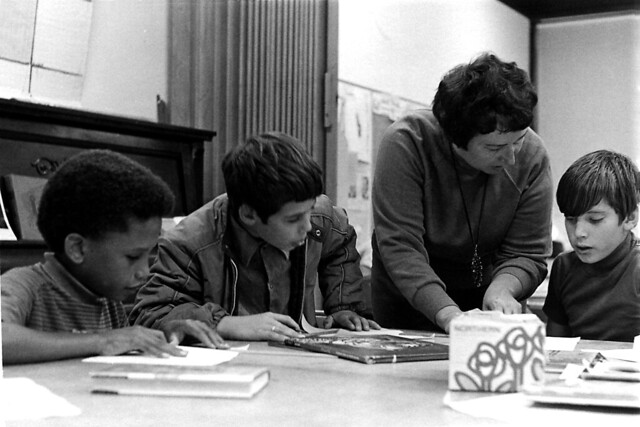
© 1970 Pip R. Lagenta, Flickr | CC-BY-ND | via Wylio
Each week, I publish a post or two containing three or four particularly useful resources on classroom instruction, and you can see them all here.
You might also be interested in The Best Articles (& Blog Posts) Offering Practical Advice & Resources To Teachers In 2016 – Part Two and The Best Resources On Class Instruction In 2016 – Part Two.
Here are this week’s picks:
Ten teaching techniques to practise – deliberately. by Tom Sherrington is a great post and well-worth reading it and the links within the post, too!
The Expository Reading and Writing Course (ERWC) is a secondary English curriculum developed by the California State University system. Our school uses their “modules” in eleventh and twelfth grade. I don’t believe you can access the materials unless your school is officially working with the University (though if you search it online you can find some examples posted by others). On this University site, however, they make the “template” for the modules available freely. I think it offers a number of good ideas. You can learn more about ERWC here.
I Am A Scientist has some pretty useful resources. Here’s how they describe their purpose:
Not every student wants or needs to pursue a career in science, technology, engineering or mathematics (STEM). However – should they choose to – demographics, interests, personality, and socio-economic status should never get in their way. We’re building classroom tools to make STEM careers technically and psychologically accessible to all students.
6 Alternatives to Reading Logs is by Shaelynn Farnsworth. I’m adding it to Best Posts On Books: Why They’re Important & How To Help Students Select, Read, Write & Discuss Them.
5 Steps to Improve Your Media Literacy is from Teen Vogue. I’m adding it to The Best Tools & Lessons For Teaching Information Literacy – Help Me Find More.
The second tweet, combined with the first one (which comments on the video) is, as Cris Tovani notes, is a great illustration of why modeling is so important:
This is why we have to model for learners of all ages. This made me laugh as my flight is delayed & I’m sitting next to Mr Sweaty https://t.co/CYT3X1cpJt
— Cris Tovani (@ctovani) April 28, 2017
Obeying instructions… pic.twitter.com/Hmt2HddY8D
— Roberto A. González (@robertoglezcano) April 28, 2017
I’m adding this next tweet to The Best “Fair Isn’t Equal” Visualizations:
A great explanation! Fair is not always equal and that is perfectly okay. ❤️ @SpecialEd_TVDSB pic.twitter.com/1mTgQKDXQP
— Brooke Wilson (@brookekwilson) April 27, 2017
I’m adding this tweet to The Best Resources For Learning How To Best Give Feedback To Students:
One of my favorite take aways from sbg conference so far. Thanks, @rickwormeli2! @ChrisRugg @DerekSwierczek @Jzoro7 @juhrik1 @Wheeling_360 pic.twitter.com/TjPYCCxBqg
— Rebecca Kinnee (@rkinnee) April 26, 2017
I’m adding this next tweet to The Best Resources For Helping Teachers Use Bloom’s Taxonomy In The Classroom:
@Ms_Levinsky @MarzanoResearch #taxonomymicdropmoment via @MarzanoResearch #edchatme pic.twitter.com/gnKuZ4P7CJ
— Matt Drewette-Card (@DrewetteCard) April 25, 2017
LOVE this anchor chart! Text Evidence! #edchat pic.twitter.com/UIZfNGQzT6
— Tom Loud, Ed.S (@loudlearning) April 24, 2017



Recent Comments